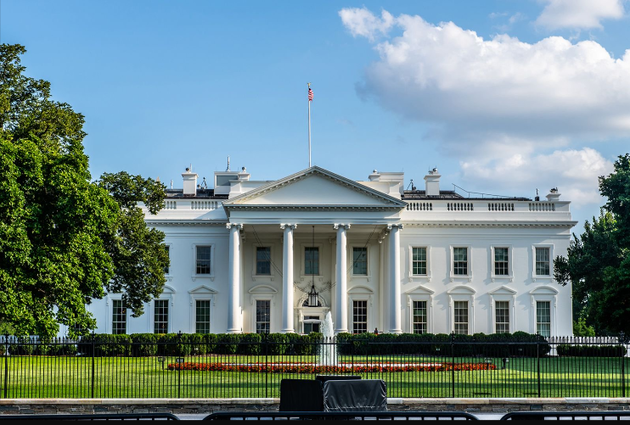Recently, the global regulatory framework for stablecoins has begun to take shape. According to industry data, the market size of stablecoins has grown from approximately $5 billion in 2020 to over $250 billion in 2025, with an annual compound growth rate exceeding 100%. Standard Chartered predicts the market could reach $2 trillion by 2028.
In an exclusive interview with National Business Daily (NBD), renowned economist Professor David Li Daokui, Dean of the Academic Center for Chinese Economic Practice and Thinking at Tsinghua University, pointed out that the explosive growth of dollar-based stablecoins is driven by two forces with aligned interests: Wall Street investment banks, with their "casino mentality" seeking more trading opportunities, and the U.S. government, with a strategic ambition to strengthen the dollar's global dominance.
In response to recent warnings issued by the European Central Bank, the Bank for International Settlements (BIS), and other institutions, Li expressed strong agreement, stating that any stablecoin—regardless of the underlying currency—poses systemic risk if left unchecked. As stablecoins mature, central banks and regulators worldwide will inevitably reassert control to prevent the market from evolving into a massive, unregulated playground for supranational capital.

Stablecoins Are Essentially Money Market Funds
NBD: What is the true nature of a stablecoin?
Li Daokui: Fundamentally, a stablecoin is a money market fund anchored to fiat currency that allows for real-time conversion. It can serve as an alternative to bank transfers.
NBD: What's the most common misconception people have about stablecoins?
Li Daokui: Many people mistakenly believe that stablecoins can replace fiat currency. In reality, stablecoins maintain a 1:1 peg to fiat, and their liquidity and supply are inherently limited by the underlying currency.
NBD: How should we define "stability" in stablecoins?
Li Daokui: The core definition of "stability" lies in the one-to-one value correspondence with fiat currency, leaving no room for arbitrage.
But de-pegging can happen. There are two main scenarios: one is hype-driven overvaluation during initial issuance due to market misperception; the other is when stablecoins are used for cross-border transactions that bypass banks and government oversight, offering extreme convenience. In such cases, some users may tolerate losses to take advantage of the ease of use—but this heavily depends on regulatory tolerance.
Wall Street and the U.S. Government Are the Two Pillars Behind Dollar Stablecoins

NBD: The U.S. House of Representatives has designated July 14-18 as "Crypto Week", during which multiple pieces of crypto legislation will be reviewed. What do you believe is the real motivation behind the U.S. government's strong push for dollar-based stablecoins?
Li Daokui: Two forces are at play here, both with aligned interests.
The first is Wall Street investment banks, who seek more trading opportunities. Think of them like casinos—they naturally want more games and more tables. Stablecoins offer a new "table", a novel financial instrument, and each transaction allows Wall Street to collect fees.
The second is the U.S. government, which views stablecoins as a tool to bypass cumbersome banking procedures. By simplifying cross-border payments, stablecoins enhance the attractiveness of both the U.S. dollar and U.S. Treasury securities.
NBD: Would you say this is a new tactic to uphold dollar hegemony?
Li Daokui: That's a fair characterization. The essence of this strategy is to promote convenience in dollar payments. However, the U.S. government will not abandon financial surveillance altogether due to the risk of illicit use. In my view, stablecoins will never fully replace traditional banks.
Why Has Hong Kong Taken the Lead?

Photo/Zhang Jian (NBD)
NBD: On August 1, China's Hong Kong Special Administrative Region will officially implement its "Stablecoin Regulatory Regime". Why has Hong Kong dared to take the lead in this field? What is the strategic logic behind it?
Li Daokui: As an international financial center, Hong Kong cannot afford to fall behind in the creation of next-generation financial products. It must ride the wave of stablecoins by launching its own assets to attract trading activity and revitalize its financial markets.
This move positions Hong Kong as a testing ground for new financial transactions.
NBD: Institutions like the European Central Bank, the Bank of England, and BIS have issued warnings about stablecoins, citing threats to monetary sovereignty and banking deposits. What are they most concerned about?
Li Daokui: Stablecoins essentially replace traditional banking transactions. If left unchecked, they could trigger financial instability. For instance, if GBP-backed stablecoins gain traction, they might divert capital from dollar-based stablecoins.
I firmly believe that after an initial trial period, central banks and financial regulators will reclaim control and impose limits. No country wants stablecoins to become a massive, supranational vehicle for unrestricted capital flows. Under such concerns, we may eventually see coordinated regulation across countries.
What Does the Stablecoin Wave Mean for the Internationalization of the RMB?

Photo/Xie Jing (NBD)
NBD: In light of the growing stablecoin trend, what are some concrete steps China can take to further the internationalization of the RMB?
Li Daokui: The hope for RMB internationalization should not rest on stablecoins. Instead, it should focus on three key strategies:
First, significantly expand China's government bond issuance to foster strong global demand for RMB-denominated assets.
Second, strengthen the fundamentals of our financial institutions—especially banks—so that they earn global trust and drive more international RMB lending and deposit activities.
Finally, if China's stock market can sustain a stable bull run, it will attract foreign investors, boosting the RMB's circulation and usage in global capital flows.
NBD: Are stablecoins and central bank digital currencies (CBDCs) overlapping in function? Do they compete or complement each other?
Li Daokui: A CBDC essentially replaces paper cash and must be tied to the development of mobile and online payments. However, promoting such systems internationally is challenging.
Stablecoins have an edge in this regard. Their primary use case will likely be business-to-business (B2B) settlements. For example, large firms involved in cross-border trade could use stablecoins to transfer funds directly—without going through a bank. That said, governments will not relinquish control over these transactions entirely.


 川公网安备 51019002001991号
川公网安备 51019002001991号





